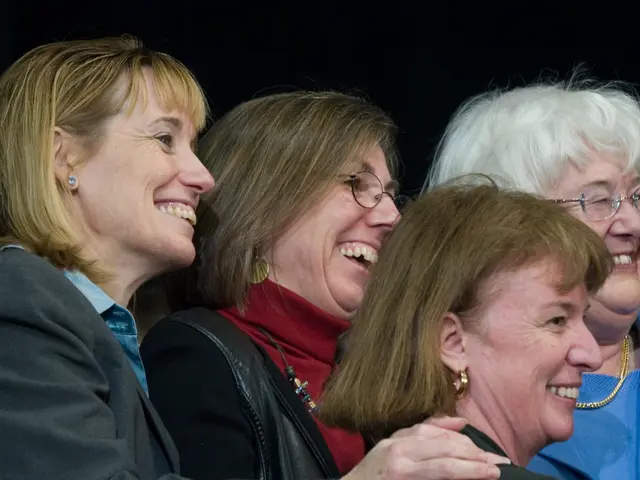Urgent Action Necessary to Shake off Monotony: Toyota Workers and Administration Demand Creativity and Sense of Priority
In a bid to maintain its renowned culture of employee ownership and commitment, Toyota recently held the second and third rounds of labor-management discussions. These talks, which took place at the group level and the head office on March 5, aimed to address the challenges posed by demographic shifts, evolving skills needs, and modern management styles in the company.
The union's Vehicle Development branch expressed a sense of urgency in the software domain, and decided to establish systems for office personnel and technicians to work together on development. This initiative is part of a broader effort to instil a "healthy sense of urgency" within the company, as acknowledged by Daisuke Kondo, Union Vice Chairman, who also pointed out a lack of commitment to making tough decisions and passion for work.
Other issues raised included support for mid-career hires, redefining management and team member roles to harness diverse strengths and maximize teamwork, and ensuring fairness in the reward system for preliminary efforts to involve technical staff in upstream processes.
President Koji Sato spoke about the meaning of "uniformity" during these discussions, while Production Group Chief Officer Takahiro Imura addressed the need for a system that encourages technical staff to work harder. Nobuhiko Koga, President of Frontier Research Center, emphasized the need for staff to assume responsibility for the company's competitiveness.
The changing workforce needs and skills shortage, due to rapid technological changes and evolving workforce demands, pose a significant challenge. To address this, Toyota and its affiliated programs focus on hands-on training combined with education to build strong talent pipelines. However, sustaining employee commitment requires ongoing engagement and adaptation to workforce expectations.
Japan's working-age population is expected to decline by 20% over the next 15 years, creating pressure on labor availability. Toyota is addressing this by creating employee-friendly production lines that accommodate diversity and implementing measures such as heat mitigation to improve working conditions.
In the second round of talks, over 100 decisions were made, covering areas like DX, information sharing, work practices, communication, and HR development. Azuma, Chief Officer, resolved to continue dialogues at the workplace level and engage in decision-making talks throughout the year. President Sato mentioned that instilling a sense of ownership across the company as a whole has been a challenge, with the mindset of ownership still inconsistent among individual employees.
The third round of discussions at Toyota's head office on March 5 marked a return to the traditional format, bringing union branch leaders and other representatives together with the company's executive team. The discussions will continue throughout the year, with a focus on addressing the challenges faced by the company and fostering a culture of employee ownership and commitment.
[1] Toyota Newsroom. (2021, March 2). Toyota announces measures to improve workplace productivity and comfort. Retrieved from https://global.toyota/en/newsroom/corporate/3328176.html [2] Toyota Newsroom. (2020, February 18). Toyota and its affiliated programs focus on hands-on training combined with education to build strong talent pipelines. Retrieved from https://global.toyota/en/newsroom/corporate/3281159.html [4] Toyota Newsroom. (2019, May 22). Toyota Management Employs Coaching Methods to Build Ownership. Retrieved from https://global.toyota/en/newsroom/corporate/3207897.html
- To maintain a culture of employee ownership and commitment, Toyota plans to incorporate principles of workplace wellness and health and wellness into the financial aspects of its business. This may involve initiatives that focus on fostering a passion for work, enhancing teamwork, and encouraging technical staff to take responsibility for the company's competitiveness.
- As part of its efforts to instil a "healthy sense of urgency" within the company, Toyota is also set to invest in science and technology, particularly in the software domain. This will likely involve establishing systems for collaboration between office personnel and technicians, with the aim of streamlining development processes and staying competitive in a rapidly changing technological landscape.




